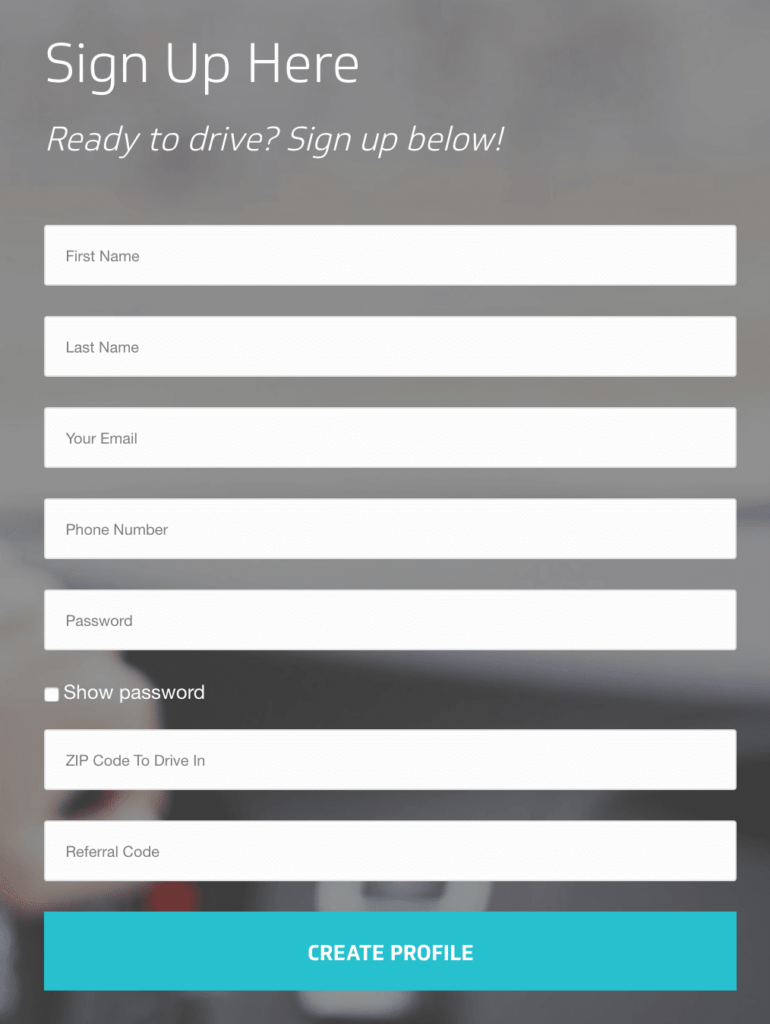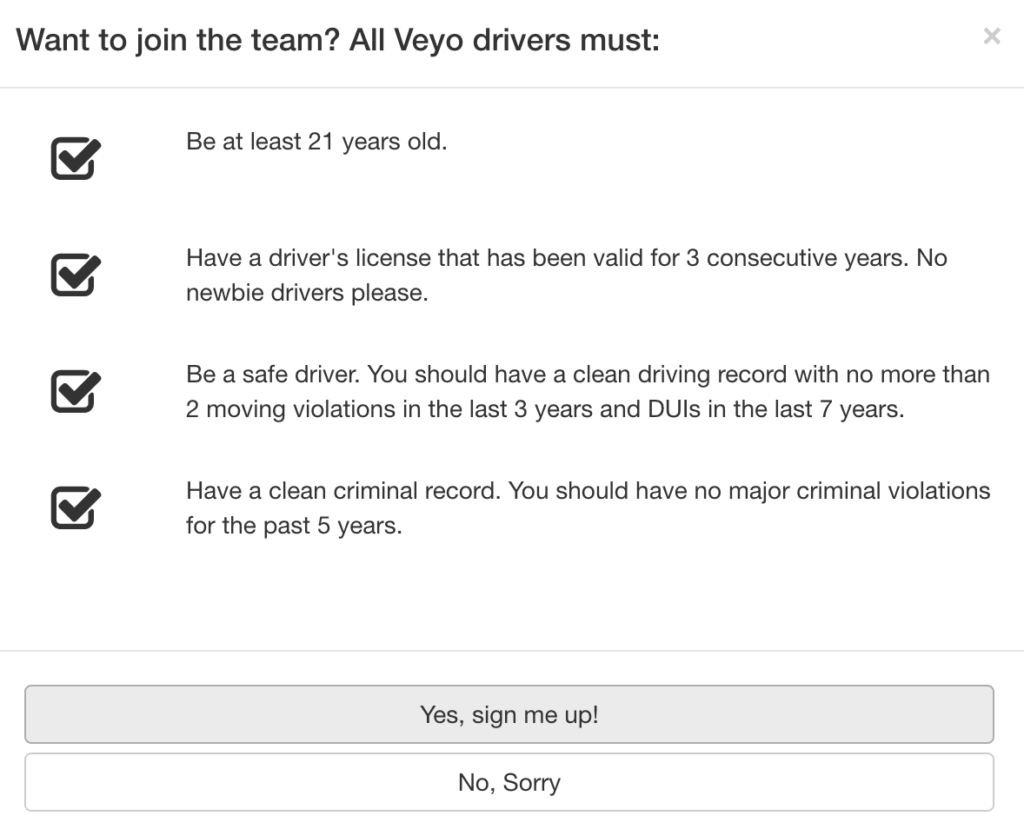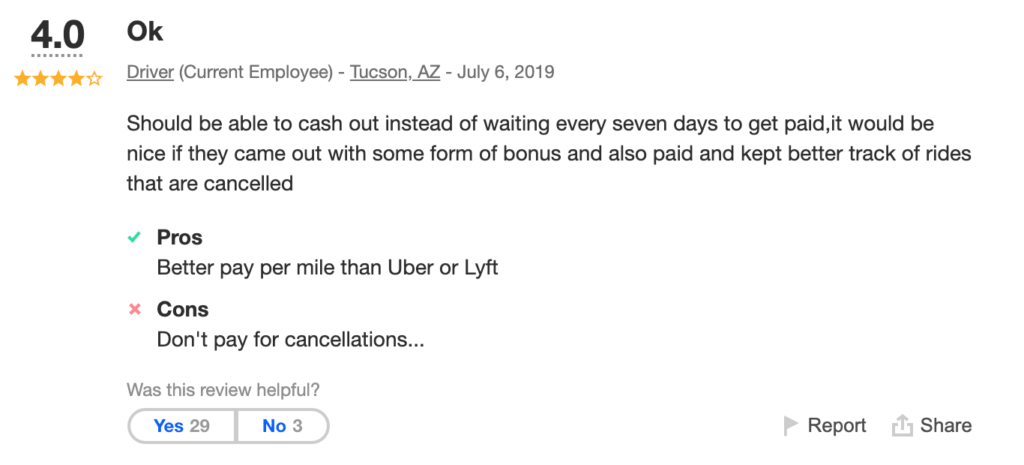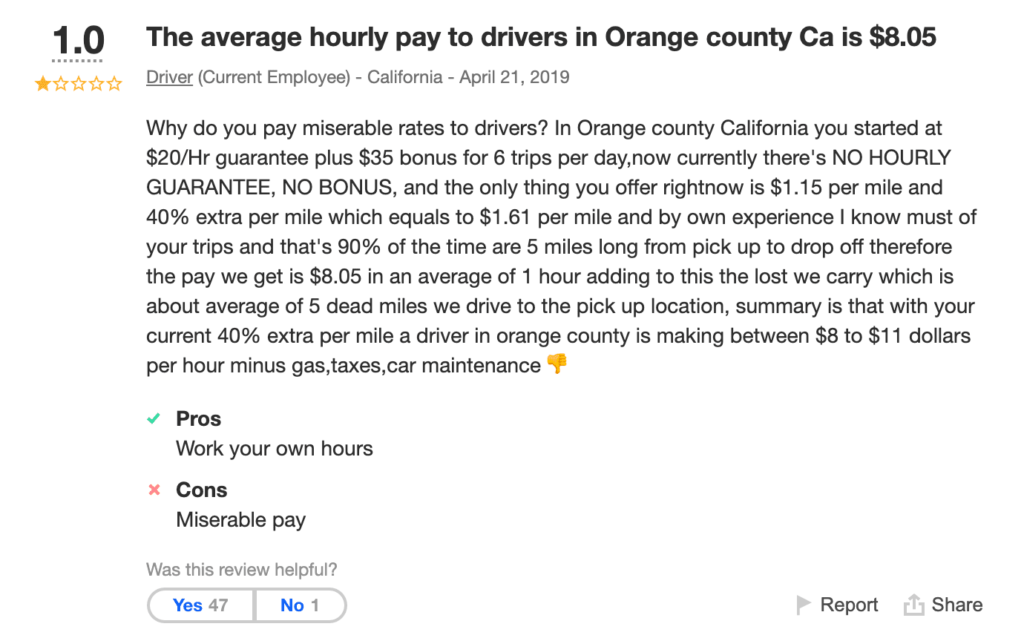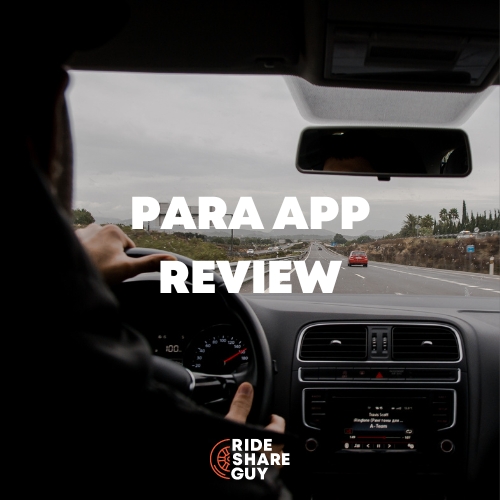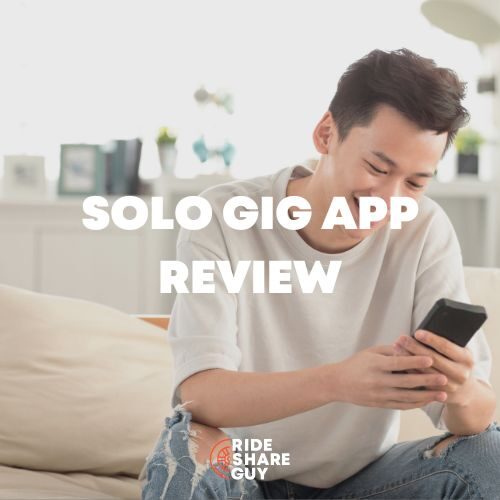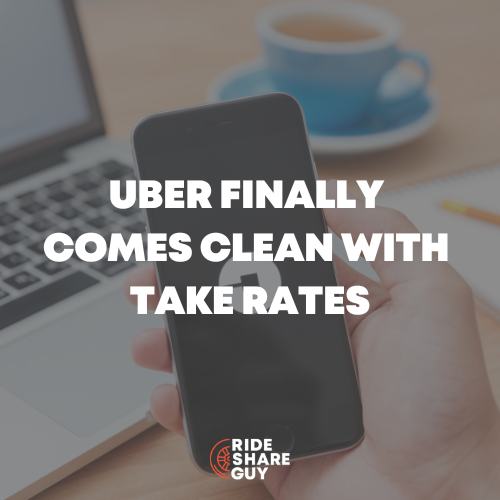We covered non-emergency medical transportation (NEMT) before in previous articles, and many of our RSG readers reacted positively about this unique and potentially profitable rideshare opportunity. Today, senior RSG contributor Paula Gibbins highlights what it’s like to sign up for and work with Veyo, plus tips for NEMT drivers.
Quick tips:
- Sign up for Veyo here!
- Readers in these cities and states can sign up with Veyo now: Arizona, Orange County, CA and Connecticut
- Read more about non-emergency medical transportation here
What Is Non-Emergency Medical Transportation (NEMT)?
According to Veyo, one of the companies providing this sort of transportation:
“Medicaid NEMT or Non-Emergency Medical Transportation is a phrase typically used to describe a transportation benefit for Medicaid or Medicare members that ensures eligible patients can get to and from their medical appointments, the pharmacy, urgent care, or the hospital.
Trips are non-emergency in nature, meaning there is no immediate threat to the health or life of the participant, and no elements of life support are required in the vehicle during the trip.”
Overall, it sounds similar to a regular ride given by any existing rideshare company, the difference being that it’s specifically geared toward those with Medicare or Medicaid and need help getting transported to and from their regular non-emergency appointments.
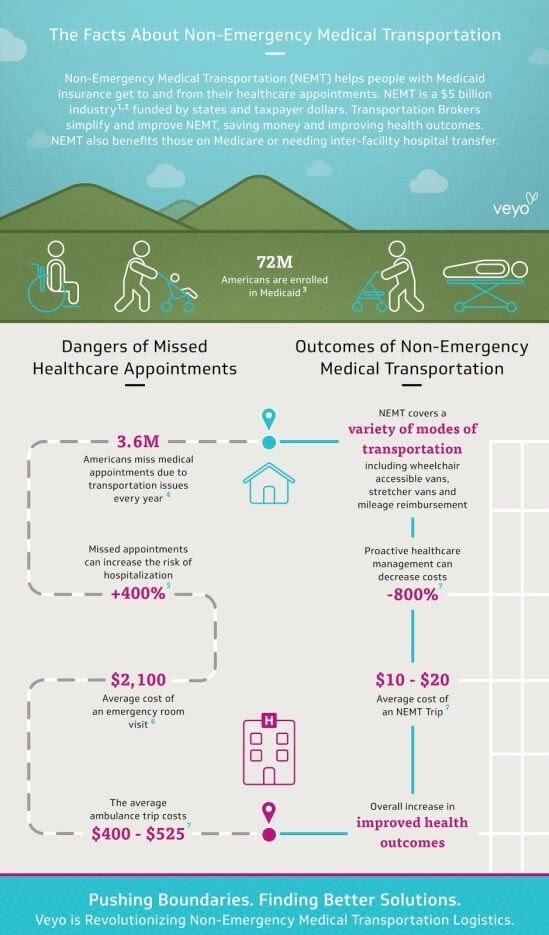
What Veyo specifically does is offer driver services as well as the technology needed to give hospitals and clinics a way to provide this service to their patients.
Their website describes Veyo as: “…a complete transportation broker, offering a next-generation solution to the logistical challenges of NEMT. We’ve revolutionized NEMT with a technology-first approach that brings the breakthroughs of consumer transportation to the medical industry.
Real-time dashboards, supply and demand analytics, and member and provider apps remove the need for traditional dispatch methods and manual trip reporting.
Instead of the traditional fixed fleets that have a difficult time scaling when demand is high (and leave providers with a surplus of vehicles on the road when demand is low) Veyo’s Virtual Fleets are flexible, allowing capacity to be rapidly scaled up and down in minutes to meet demand changes.
Our dynamic supply system constantly manages and optimizes the right supply levels for different modes across geographies (both urban and rural), ensuring that every member gets picked up on time.”
What is Veyo? How Does It Work?
As mentioned above, Veyo is a non-emergency medical transportation broker, and they are headquartered in San Diego, California. They provide drivers to hospitals and clinics so those locations can provide rides for their patients.
This allows patients to make it to appointments even if they do not have their own way of getting there or if alternate transportation is not available.
Veyo is available for state departments or health plans so those institutions can better manage their NEMT programs. Veyo states:
“Government agencies and managed care organizations (MCOs) spend millions of dollars on this critical benefit to ensure Medicaid and Medicare Advantage members can get to and from their healthcare appointments—safely and reliably. The Veyo Platform is designed to bring next-generation technology tools to the management of NEMT benefits.
Compare Veyo to other standard NEMT services and rideshare companies:
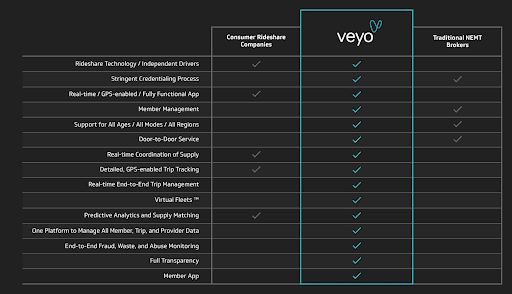
For their drivers, Veyo offers a flexible schedule, while letting them know their busiest times are between 6 a.m. and 6 p.m. from Monday through Saturday.
How to Become a Driver for Veyo
The onboarding takes about 3-5 days and they require you to have a rideshare endorsement on your insurance policy to cover you while working for them. You can find rideshare insurance options by state here.
You do not need to have EMT or paramedic experience or training because you’ll only be transporting patients for their non-emergency appointments.
Typical trips include: mental and behavioral health appointments; dialysis for someone who has advanced kidney disease; substance abuse counseling and treatment services; a trip to the doctor for primary care or specialist visits; and physical therapy or other forms of rehabilitation.
These are not last-minute appointments, so Veyo is able to know when and where pickups are beforehand and will help guide you to the locations.
As far as vehicle requirements are concerned, you can drive any vehicle that meets the following criteria:
- Model year 2001 or newer (2006 in Connecticut)
- Vehicle must have 4 doors
- Seating and seatbelts for 4 passengers, not including the driver
- 30″ max seat height and 20″ min seat height
- Room for a wheelchair in the back/trunk
Vehicles where the lift height has been altered, pickup truck crossovers (e.g. Chevy Avalanche), or larger SUVs (e.g. Hummer), cannot be used to drive with Veyo. And all vehicles must pass a vehicle inspection by Veyo.
To sign up, simply go to their sign-up page to get started.
Make sure to input referral code ‘RSG’!
As soon as you click on Create Profile, a pop-up will come up asking if you qualify:
For me, that’s as far as I got. After I clicked “Yes, sign me up!” I was taken back to the original sign-up screen with a message that said that they do not operate in my zip code.
So, I went back and changed the zip code so I could figure out more about the sign-up process for you.
I immediately got a couple of texts from Veyo:
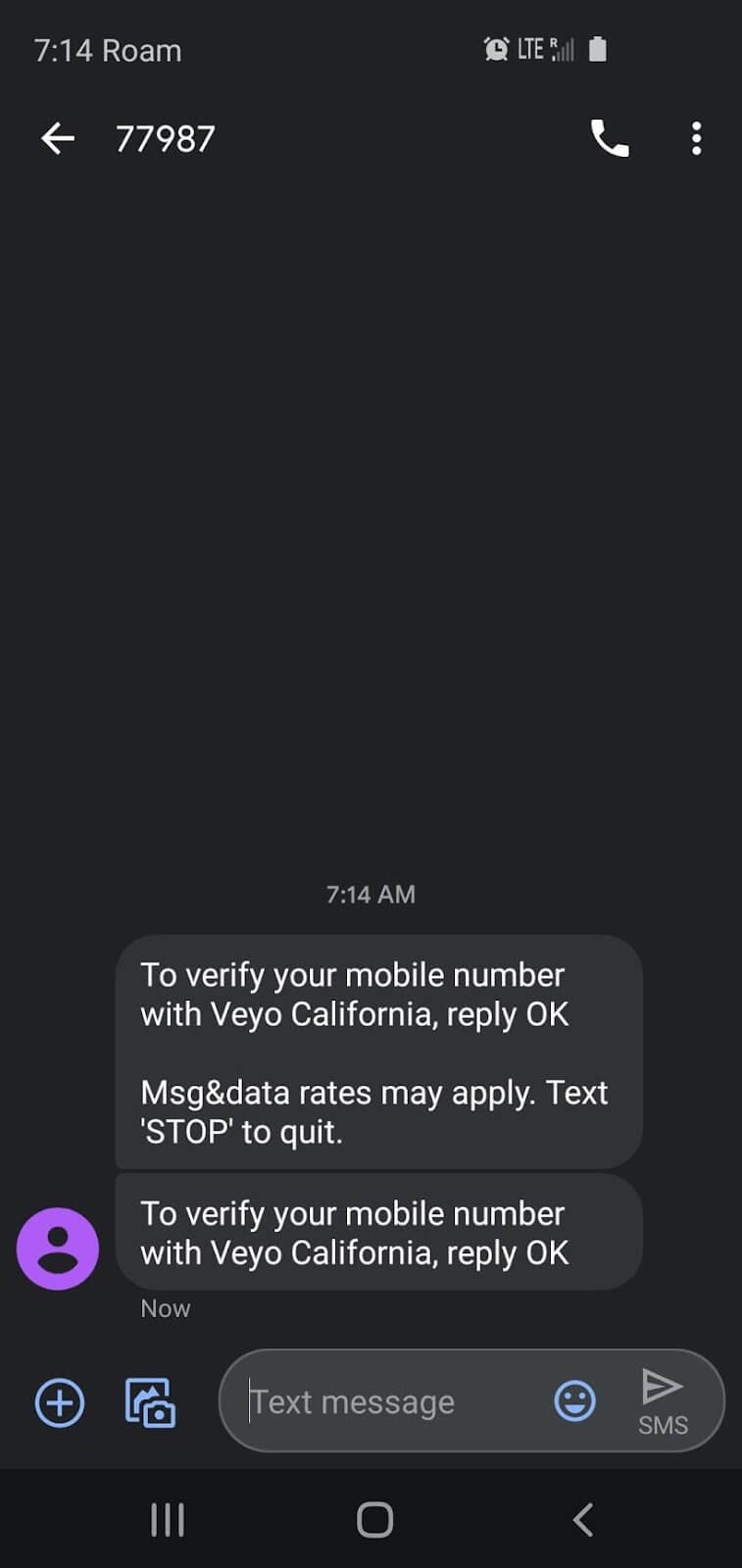
On the website, the next step is to fill out your mailing address. This is where I stopped for good. I did not want to put in a fake address (or what might turn out to be a real address).
From the looks of it, after you fill out that information, you’d be prompted to provide vehicle information, submit documents such as your driver’s license, vehicle registration, vehicle insurance and Social Security Number so they can run a background check on you.
As long as you have all of your documents ready and available, you’d basically just wait for the background check to come back and you can get on the road for Veyo.
How Much Can Drivers Make?
Pay varies by region, and according to the Veyo website, “We don’t take any commissions or fees out of our rates.”
One driver in Arizona gave the following review of Veyo:
Another gave more specifics about the pay as a California driver:
So, take the reviews as you will. It’s up to you as a driver to determine if the pay is better than other options out there. Look into your area and see what your rate is.
Veyo is “currently looking for drivers in Orange County, California. The majority of our trips are around the Anaheim and Santa Ana areas.” They are also available in Arizona and Connecticut.
Tips for Veyo Drivers
Veyo is a little different from regular rideshare driving, so your day with Veyo might look a bit different from a standard day with Uber or Lyft.
As mentioned, they are only really active during the day, from 6 a.m. to 6 p.m., so it’s geared more toward daytime drivers. If you prefer late night driving, this is not the best option for you.
Another big difference is that they do not allow you to “cash out” your earnings throughout the week. You get paid once a week and that’s it.
If you utilize the cash out option on Uber and Lyft often and rely on that kind of flexibility, Veyo might not be your favorite option.
Similar to Uber and Lyft, if you are “Online” you’ll be open to receiving trip requests. When a trip is available for you, you’ll get a notification that lasts 15 seconds.
You can either accept the trip or you can decline, depending on if you want that trip or not. From what they show on their website, it looks like in Veyo, you can see where your trip would be going as part of the notification.
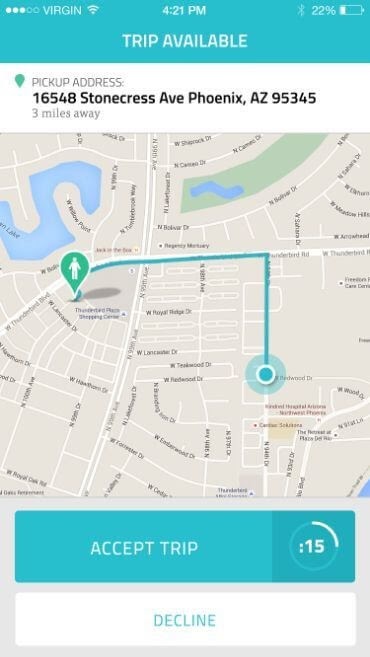
Veyo is upfront about limiting or temporarily suspending your access if you decline or cancel too many trips in a short period of time.
They are trying to ensure the patients are picked up in a timely manner as they are heading to appointments. It’s not like regular rideshare driving where it doesn’t always necessarily matter when the rider gets to their destination.
Should You Drive for Veyo?
Overall, if Veyo is in your city and pays more than Uber or Lyft, I would definitely check it out. It’s particularly good for those drivers who don’t like driving at night or have other family obligations that prevent them from driving at night.
Remember, these will not be emergency rides you’re giving. You’ll be taking people to the hospital or doctors’ office, yes, but these appointments are scheduled in advance – not life-threatening emergencies. You shouldn’t need to worry about anything happening to the interior of your vehicle, although we do always recommend drivers get seat covers for their seats!
Would you drive for non-emergency medical transportation? Would you prefer it to rideshare driving?
-Paula @ RSG
Quick tips:
- Sign up for Veyo here!
- Readers in these cities and states can sign up with Veyo now: Arizona, Orange County, CA and Connecticut
- Read more about non-emergency medical transportation here
